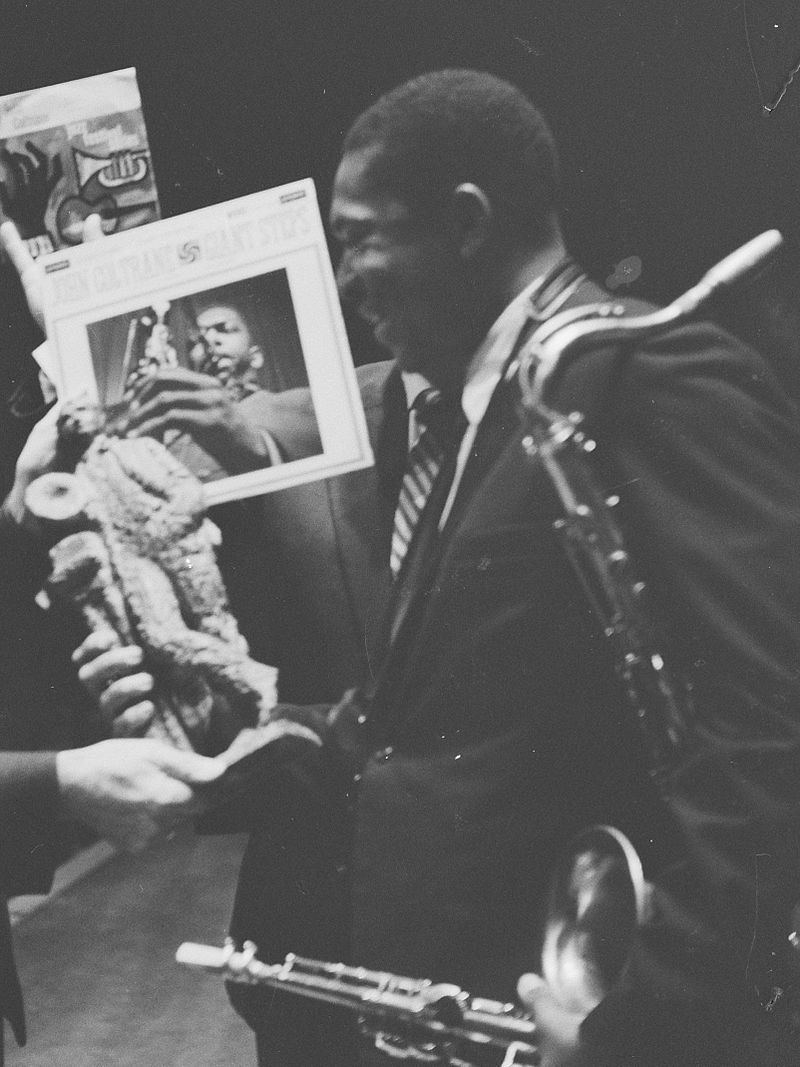
Free Jazz (Continued)
It is interesting to note John Coltrane found Coleman's approach to jazz influential and liberating. Coltrane was refining his remarkably virtuosic approach to hard bop at the time that Coleman was recording his early free jazz albums. Coltrane's virtuosity was epitomized by his 1959 album Giant Steps , in which he demonstrates his ability to produce a seemingly endless barrage of harmonically sophisticated solo phrases over a dense harmonic structure played at a blistering tempo such as the song "Giant Steps" (starting at 00:25) and "Countdown" (starting at 00:23). While Coleman was abandoning these virtuosic elements, Coltrane pushed them to a level that required extreme technique and commitment. The experience of listening to Coleman's early recordings and live performances seemed to provide Coltrane with a new path forward. Instead of merely imitating Coleman, however, Coltrane found his way in free jazz, one that went even further than Coleman's in discarding the traditional musical elements of bebop. In particular, Coltrane's brand of free jazz removed the regular rhythmic pulse that Coleman had retained.
In Coltrane's new music of the mid-1960s, not only are the formal structures and harmonic changes of bebop missing but there is no rhythmic pulse to ground the music metrically. Coltrane also employed his immensely virtuosic technique to continue his trademark "sheets of sound" approach to improvising, which contrasted to Coleman's more melodic and austere style. In a series of several albums from 1964 leading up to his untimely death in 1967, Coltrane produced a brand of highly emotional, often spiritually charged, free jazz that would become nearly as influential as Coleman's. Coltrane's 1966 album Ascension illustrates this new path forward.
Another musician influenced by Coleman's experiments in free jazz but took them in a new direction was pianist Cecil Taylor. Taylor embraced the challenge of playing the most traditional of harmonic instruments in a way that shattered nearly all preconceived ideas of a pianist's role in a musical ensemble.
Taylor's classical training had exposed him to both the virtuosity and the expansion of harmonic possibilities of the European avant-garde. He used those influences to create a style of piano playing that defied all harmonic conventions and instead explored the piano's expansive options inherent in its range, percussive potential, and gesture. Listen to Taylor's "Free Improvisation #3."

Cecil Taylor - Free Improvisation #3 [ 00:00-00:00 ]
Heebie Jeebies
Say, I've got the Heebies
I mean the Jeebies
Talking about
The dance, the Heebie Jeebies
Do, because they're boys
Because it pleases me to be joy
Boogie Woogie Bugle Boy
He was a famous trumpet man from out Chicago way
He had a boogie style that no one else could play
He was the top man at his craft
But then his number came up and he was gone with the draft
He's in the army now, a blowin' reveille
He's the boogie woogie bugle boy of Company B






